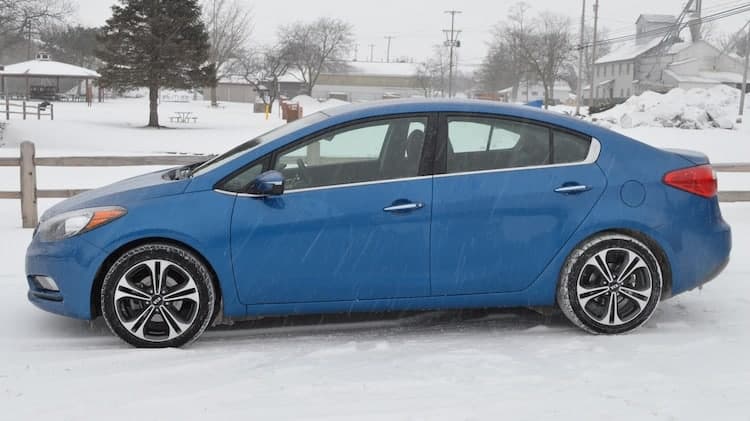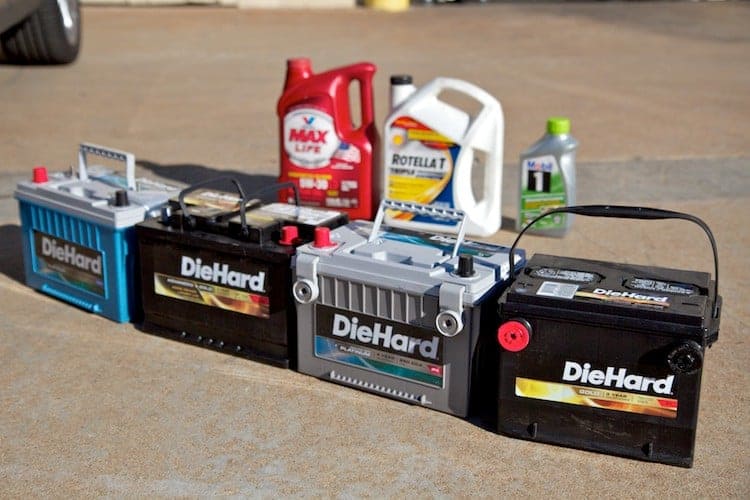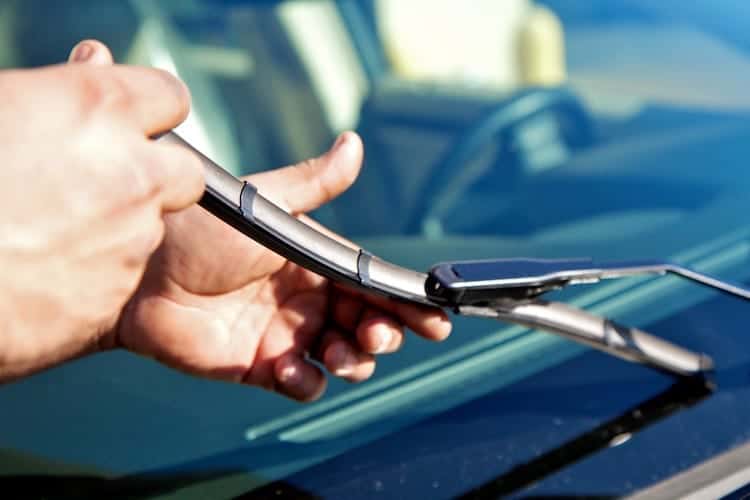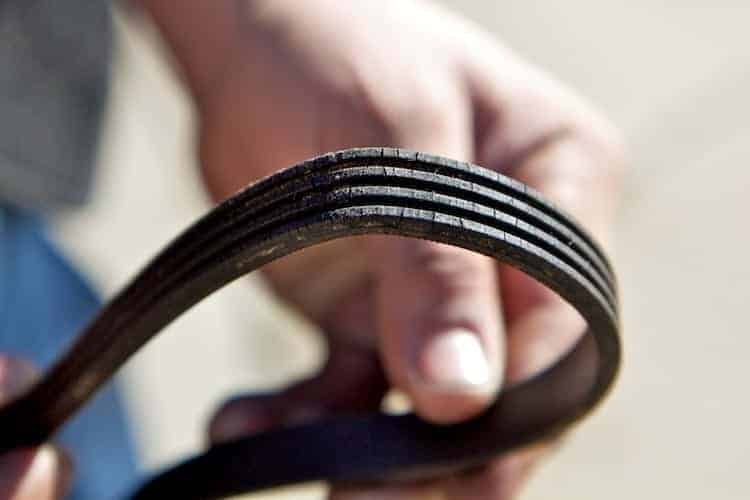
The freezing temperatures, frigid winds and piles of ice and snow that winter brings are not only annoying for you but they can wreak havoc on your car. While they can easily cost money in the short term, they can also lead to major repairs over time. Luckily, with the help of friendly technicians at your local Sears, you can make small adjustments to your winter routine in order to prevent major repairs (and accidents).
PSSSTTTTTT! Don’t forget to enter the giveaway at the end of this post to win a $50 Sears Gift Card!
The Battery
If you’ve ever had a dead car battery, you know that it’s essential to the life of your car. From simply getting it started and going to powering your head lights, wipers and perhaps the most convenient component – the stereo. Unfortunately, all batteries will eventually die and need replacing but cold weather has a way of seeping energy from your battery. In fact, AAA reports a 300 percent increase in the amount of battery-related calls once winter rolls around. According to the group’s experts, cold temperatures slow down the reactions that make batteries work properly. If those reactions are slowed enough, or if your battery too old, you may not get enough boost in freezing weather to start your car. Other issues affecting battery life are heavy usage, essential systems like your onboard computer causing constant drain, driving utilities and luxuries like your stereo and – if you’re lucky – heated seats.

Make your battery life last longer
All batteries have a negative and positive terminal to which cables connect, allowing an electrical current to flow from the battery to the car’s engine and accessories. Simple maintenance like checking battery terminals regularly for dirt or corrosion, which can be harmful to the battery, will help. Also make sure the battery gets charged with some drive time at least once a week.
Make sure you’re using the right battery
Not all batteries are equal. From different length warranties, to the amount of juice they hold/deliver, one of the most important things to consider is battery type. Old school lead/acid batteries are most common and least expensive, but if you live in winter weather climates, you’ll definitely want to consider an AGM (Absorbed Glass Matt) battery to avoid frozen battery issues.
Crank it up
Cold cranking amps (CCA) is a measurement of the number of amps a battery can deliver at 0 ° F for 30 seconds and not drop below 7.2 volts. Winter weather folks will want to choose a battery with a high CCA battery rating for smoother starts.
Depending on the above factors, battery life typically lasts an average of 3 to 6 years.
Windshield Wipers
Have you ever tried to drive with a dirty windshield? Dirt, salt and bugs can clog up your visibility and prove to be quite a nuisance. Factor in the blowing sleet and snow of winter and you realize just how much you depend on your windshield wiper blades. A quality set of windshield wipers and the right wiper fluid for the temperatures in your area are essential to being safe throughout the coldest weather.
Did you know 90% of our driving decisions are made based solely on visual information, yet one out of every five vehicles on the road have deficient windshield wipers.
Wiper blades that no longer make proper contact with the windshield surface can be dangerous. They impair your visibility as they streak, smear, chatter, skip and squeak. But how do you know when it’s time to replace those blades?
 In general, wiper blades should be replaced every six months but look for these signs to make sure they don’t need to replaced sooner:
In general, wiper blades should be replaced every six months but look for these signs to make sure they don’t need to replaced sooner:
- Broken frame
- Metal corrosion
- Visible cracks
- Difficulty flexing rubber squeegee
- Rounded squeegee edges
- Loose wiper blades
Good news, there are a few things you can do to protect your windshield wiper blades and help extend their life usage.
- For starters, give your windshield a good cleaning every time you fill your gas tank. Running your blades over all that gunk can actually damage and lessen the life of the blade.
- Never use your windshield wipers to de-ice your windshield. Instead, use an ice scraper to remove ice and snow or let your defroster melt them off your windshield.
- In winter months, pull your wiper blades away from your windshield to prevent ice build-up on the squeegee and to prevent them from sticking to the windshield.
Other Wintertime Problems
Cold temperatures paired with ice and snow can cause small problems to snowball – all puns intended. By proactively managing a few areas of your car you can prevent major expenditures later.
Low Tire Pressure
Cold temperatures cause tire pressure to drop. The experts at Sears Auto Center stress how important it is to have proper tire inflation. Not only does it improve handling during slick conditions, but as a bonus you’ll reap better gas mileage. Check out our tire maintenance tips and tricks here.
Old, Dirty or Incorrect Fluids
Did you know certain fluids need to be adjusted for cold weather? Fresh antifreeze helps your components stay lubricated in subzero conditions and keeps contaminants from marring your radiator, preventing rust and leaks. While a radiator fluid can help your car have an easier time maintaining the correct temperatures.
Belts
Before heading out on any major road trip, it’s always a good idea to check on your car’s engine belts. There are a few of them and each are essential to your car running properly.
 Time is a natural culprit to their wear and tear, but the freezing temperatures of harsh winters also greatly affects their life. Dry, cracked belts are a sure sign of needing to be replaced.
Time is a natural culprit to their wear and tear, but the freezing temperatures of harsh winters also greatly affects their life. Dry, cracked belts are a sure sign of needing to be replaced.
Frozen Gas Lines
Running low on gas allows moisture to pool in your gas lines. Moisture and a big temperature drop is all it takes for your gas lines to freeze. It’s easy to avoid this by filling up long before your car is empty and with gas prices as low as they are now, there really is no excuse.
Misaligned and Damaged Shocks and Struts
Extreme temperature changes, salt and other chemicals are hard on roadways leading to dreaded pot holes. These provide a beating on your shocks and struts and your cars alignment. These can take a hit on your cars handling – making dangerous roads even more dangerous – and even effect your fuel economy. Be proactive in managing these components for a safer driving experience.
Find out more ways to prevent winter weather from wrecking your car from Sears Auto Center.
This post is written on behalf of Sears Auto Center. I visited a location near my home and was provided a short educational experience in order to share this post with you. All opinions remain my own.
The Giveaway
One lucky winner will receive a $50 Sears Gift Card.
How to Enter to Win
Step#1: Visit the Sears Auto Center car care tips site here and let me know in the comments below which article you found most helpful.
Step #2: Use this easy giveaway form below to record your entries – good luck!! The comment entry is the only mandatory one you must complete to enter. All others are purely optional for those that really want to win!
I love having a husband is who like my personal auto mechanic! He has done all of the above so my car is fit and ready for the snow!
what goes into brake job and differential
and 5 people have poor windshield wipers that’s unsightly!
I learned this tip and it was new to me: As one of the most important components on your vehicle, the fluids that keep your differential running can be the, ahem difference between a smooth and safe ride.